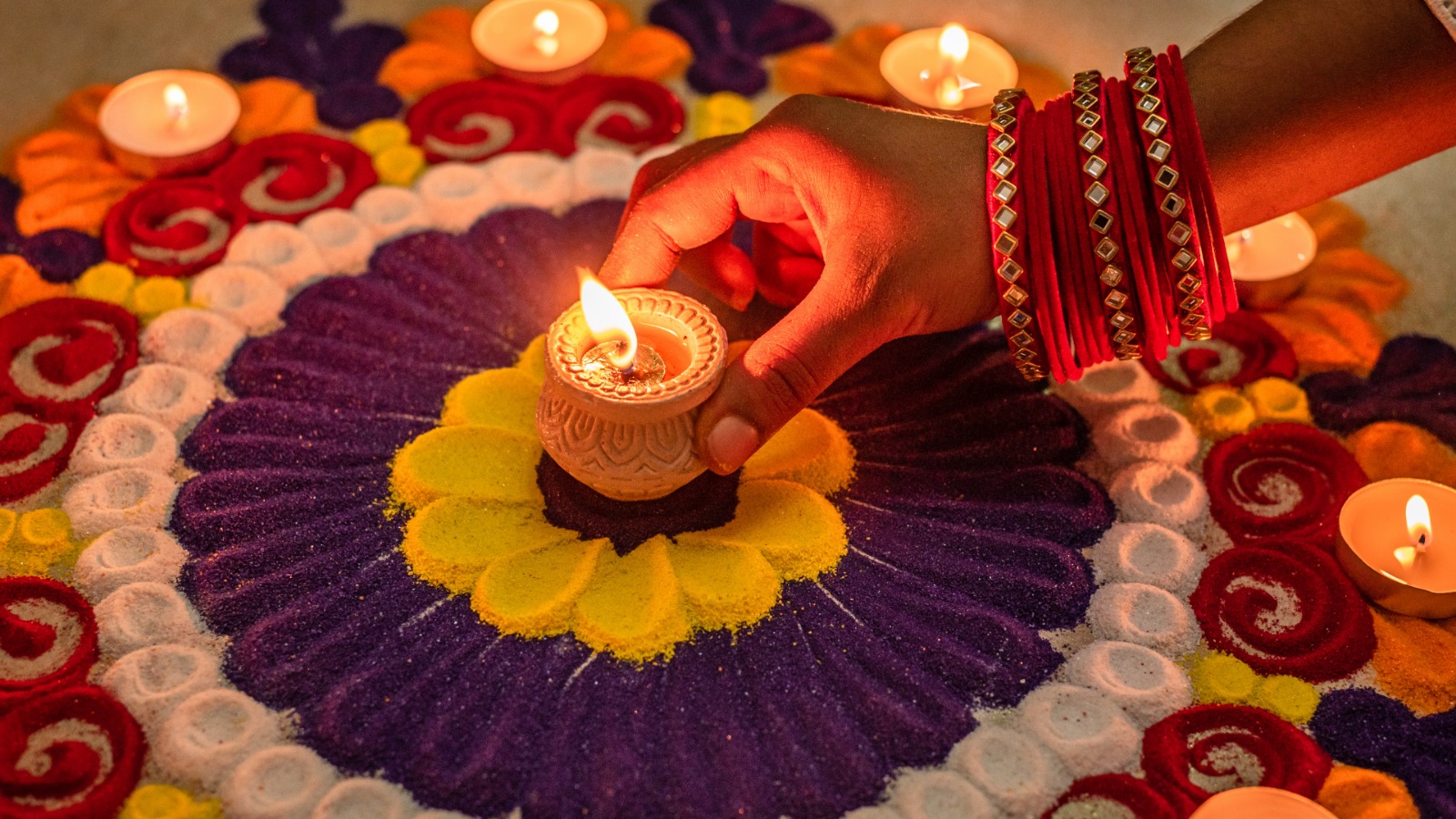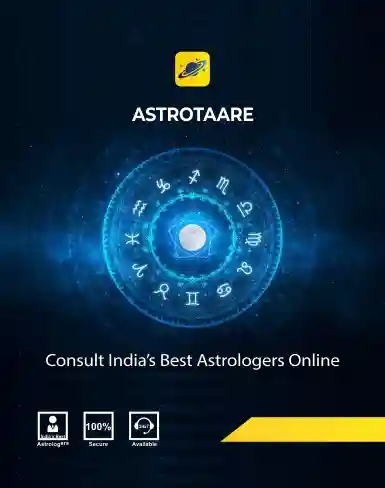Blog
Navratri Astrology: Unveiling the Celestial Significance of the Nine Nights
Author: Astrologer
Category: Navratri
Posted on: Oct 16, 2023

Introduction
Navratri, a vibrant and widely celebrated Hindu festival, spans nine nights of devotion, dance, and divine celebrations. This annual festival is dedicated to Goddess Durga, who represents the divine feminine energy in Hinduism. Beyond the colorful dance performances, sumptuous feasts, and mesmerizing music, Navratri also holds a deep astrological significance. In this blog, we will delve into the celestial aspects of Navratri, exploring how the alignment of stars and planets during this time influences our lives and spirituality.
Also read - Exploring Ancient Wisdom of Vedic Astrology and Palmistry
Navratri and Astrology
Astrology is the study of the positions and movements of celestial bodies, such as planets and stars, and their potential impact on human affairs and natural phenomena. Throughout history, many cultures have recognized the connection between celestial events and terrestrial experiences. In Hinduism, astrology is intertwined with religious and spiritual practices, and Navratri is no exception.
The Timing of Navratri
Navratri occurs twice a year, with the most significant celebration happening in the autumn (Sharad Navratri) and a smaller one in the spring (Vasant Navratri). The timing of these festivals is determined by the lunar calendar, specifically the waxing and waning phases of the moon. This lunar connection is a fundamental aspect of Hindu astrology and is intricately linked to the rituals and practices observed during Navratri.
The Nine Nights and the Nine Planets
During Navratri, each of the nine nights is associated with a different form of Goddess Durga. These forms are believed to align with the energies of the nine celestial bodies, or Navagrahas, in Vedic astrology. The Navagrahas consist of the sun, moon, Mars, Mercury, Jupiter, Venus, Saturn, Rahu (North Node), and Ketu (South Node). Each of these celestial bodies exerts a unique influence on our lives, and during Navratri, they are honored and propitiated in their corresponding forms of Goddess Durga.
The Celestial Harmony
The significance of Navratri in astrology lies in the harmony that is believed to be established between the energies of the Navagrahas and the manifestations of Goddess Durga. This celestial alignment is thought to bring forth positive changes in individuals' lives, both spiritually and materially.
Let's delve deeper into the astrological significance of each night of Navratri, the corresponding Goddess Durga forms, and their connection to the nine planets:
1. Pratipada (First Night) - Shailaputri
Shailaputri, the first form of Goddess Durga, is associated with the moon. The moon represents purity and devotion in Hindu astrology. Worshiping Shailaputri on the first night of Navratri is believed to invoke these qualities in individuals, allowing them to embark on the spiritual journey with a clear mind and unwavering devotion.
2. Dwitiya (Second Night) - Brahmacharini
The second night of Navratri is dedicated to Brahmacharini, who is linked to Mars. Mars signifies courage and strength. Worshiping Brahmacharini is said to instill these attributes, helping devotees overcome obstacles and challenges in their spiritual endeavors.
3. Tritiya (Third Night) - Chandraghanta
On the third night, Chandraghanta, the form of Goddess Durga associated with Venus, is worshipped. Venus is associated with love, beauty, and desire. By paying homage to Chandraghanta, individuals are believed to gain a deeper understanding of love and experience the beauty in life's spiritual aspects.
4. Chaturthi (Fourth Night) - Kushmanda
Kushmanda, the fourth form of Goddess Durga, is connected with the Sun. The Sun represents authority and power. Worshiping Kushmanda on this night is believed to bestow individuals with the strength and authority to lead a spiritually fulfilling life.
5. Panchami (Fifth Night) - Skandamata
The fifth night is dedicated to Skandamata, who represents Jupiter. Jupiter is associated with wisdom and knowledge. Worshiping Skandamata is thought to impart wisdom and clarity of thought to seekers on their spiritual journey.
6. Shashthi (Sixth Night) - Katyayani
Katyayani, the form of Goddess Durga associated with Mercury, is worshipped on the sixth night. Mercury represents communication and intellect. Devotees seek Katyayani's blessings for enhanced communication with the divine and an increase in spiritual intelligence.
7. Saptami (Seventh Night) - Kaalratri
Kaalratri, associated with Saturn, is honored on the seventh night. Saturn symbolizes discipline and self-control. By worshiping Kaalratri, individuals aim to develop the discipline and self-restraint necessary for a profound spiritual journey.
Chat here: Chat with astrologer online
8. Ashtami (Eighth Night) - Maha Gauri
On the eighth night, Maha Gauri, linked to Rahu, is worshipped. Rahu is known for its disruptive influence, and Maha Gauri is believed to calm these disturbances, allowing individuals to overcome the challenges presented by Rahu's energy.
9. Navami (Ninth Night) - Siddhidatri
The final night of Navratri is dedicated to Siddhidatri, the form of Goddess Durga associated with Ketu. Ketu is considered a spiritual planet, representing liberation and enlightenment. Worshiping Siddhidatri on the ninth night is believed to bestow spiritual enlightenment and self-realization.
The Role of Planetary Transits
In addition to the daily worship of specific forms of Goddess Durga, many individuals also consult astrologers during Navratri to understand the influence of planetary transits during this auspicious time. The positions of the planets during Navratri are believed to hold special significance and may influence the devotee's life journey in various ways.
Here are a few key planetary aspects to consider during Navratri:
1. Mercury Retrograde: The retrograde motion of Mercury during Navratri can be seen as an opportunity to reflect on one's communication and thought patterns. It is a time to reconsider one's approach to spiritual learning and understanding.
2. Venus and Love: Venus, the planet of love, is often well-placed during Navratri. This alignment can inspire feelings of love, devotion, and compassion, making it an ideal time to deepen one's connection with the divine and cultivate love for all beings.
3. Jupiter's Blessings: Jupiter's alignment during Navratri can bring blessings in the form of wisdom, knowledge, and spiritual growth. Seekers often turn to Jupiter's influence to gain insight and clarity on their spiritual paths.
4. Saturn's Discipline: Saturn's presence during Navratri reinforces the importance of discipline and self-control on the spiritual journey. It can be a time to evaluate and strengthen one's commitment to spiritual practices.
5. Lunar Aspects: The phases of the moon during Navratri can symbolize the waxing and waning of one's inner strength and spirituality. The new moon represents new beginnings and intentions, while the full moon symbolizes the culmination of spiritual growth.
Conclusion
Navratri is a beautiful fusion of spirituality, devotion, and astrology. The alignment of the celestial bodies during these nine nights is believed to enhance the spiritual journey of individuals, guiding them toward wisdom, strength, and self-realization. While the festival offers a myriad of vibrant cultural celebrations, its deeper astrological significance reminds us of the profound connection between the cosmos and our spiritual endeavors.
Have any questions? Speak with an astrologer: Download the App Now






 SIGN IN WITH GOOGLE
SIGN IN WITH GOOGLE